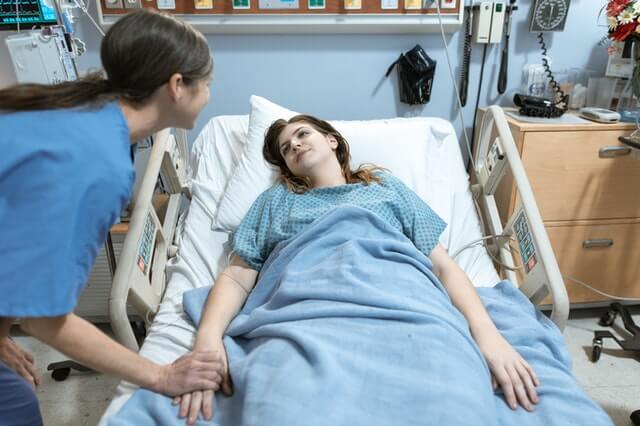Many different people interact with a single patient. This article demonstrates how patient handoff errors can lead to deadly consequences.
Jennifer Nibarger, a 47-year-old wife, a daughter, and an aunt to 14 nieces and nephews was airlifted to a level 1 Trauma Center after a horrific crash.[1] She had a number of complications with her breathing and added hospital-acquired infections. After many weeks though, things were looking up as her condition significantly improved and discharge planning had begun for a possible Wednesday departure dependent on the results of a barium swallow test which would show if she could be started on soft foods.
The barium swallow test results discovered that she had TEF – Tracheoesophageal Fistula, which is a hole in the tissues between the trach and esophagus. This type of rare complication would require a complex surgery to repair. That surgery would never come into fruition though because the very serious complication had caused the barium to move into her lungs causing respiratory distress. After being transferred between units and landing back into the ICU, she was simply put onto the ventilator receiving large cycles of O2 concentration believing she only had anxiety. No physical assessment, no blood gases were taken or ETCO2 monitoring occurred and no realization of the newly discovered diagnosis. For 6 hours, they were blowing her full of air into her belly instead of her lungs and she ended up in cardiac arrest for over 14 minutes due to her body and organs becoming completely oxygen-deprived. The code blue team discovered Jennifer’s belly had been extended to 4x the normal size and performed an emergency pressure relief through her abdomen and re-intubated her with a longer tube to isolate the TEF from the lungs. For the next 3 weeks, she was sustained through life support, hoping for a miracle that never came and she was eventually was removed.
How Patient Handoff Errors Lead to Serious Consequences
How is it possible on Monday morning, Jennifer was given a definitive diagnosis of TEF, and on Tuesday afternoon she was back on a positive pressure ventilator with no protection from that hole that they just discovered and eventually died? – because of multiple patient hand-off communication errors.
Jennifer’s case was not a 1-off, but 1 example of a serious problem- medical errors which is the 3rd leading cause of death in America after heart disease and cancer[2]. (And covid, but that is an anomaly) Proper medical patient handoff is vital to patient care. The challenges to provide accurate patient information about their care plan, treatment, current condition, and any anticipated or recent changes in the patient’s condition can be difficult though when distractions arise when workload and patient load continue to increase, there is poor processes, lack of communication, and/or overworked and tired staff.
A medical scribe’s primary responsibility is to be by the side of the physician to transcribe in real time the patient encounter to ensure notes are completed sooner and the physician can spend more time with the patient for optimal patient care. Their second responsibilities can consist of record retrieval, setting and maintaining the flow of tasks for the patient or physician, follow up on test results, and be a protective factor in reducing medical error. Certified Medical Scribes are the secret weapon against burnout and can potential be a valuable support in the goal of zero harm!
[1] https://www.thedenverchannel.com/news/national/patient-safety-movement-aims-to-reduce-preventable-deaths https://patientsafetymovement.org/patient-safety/patient-stories/jennifer-nibarger/

